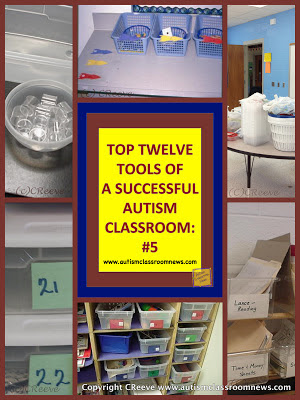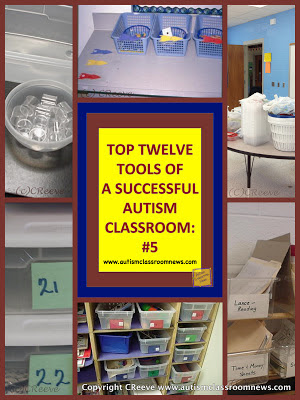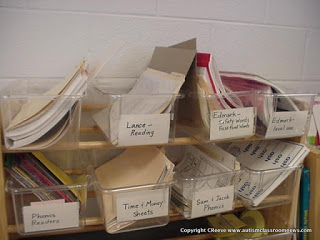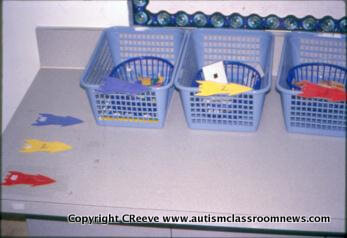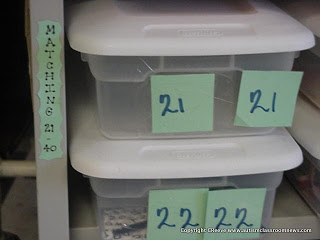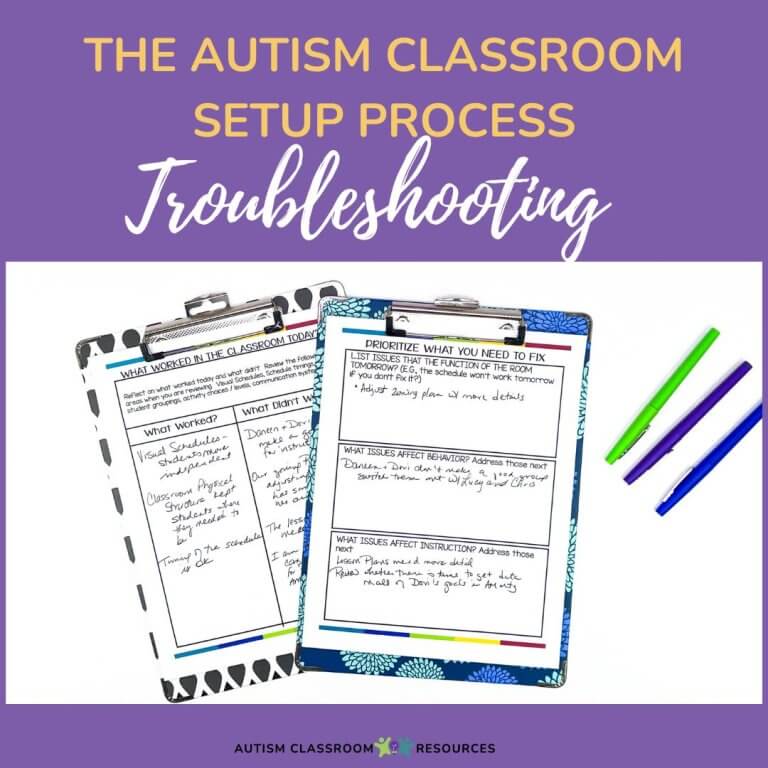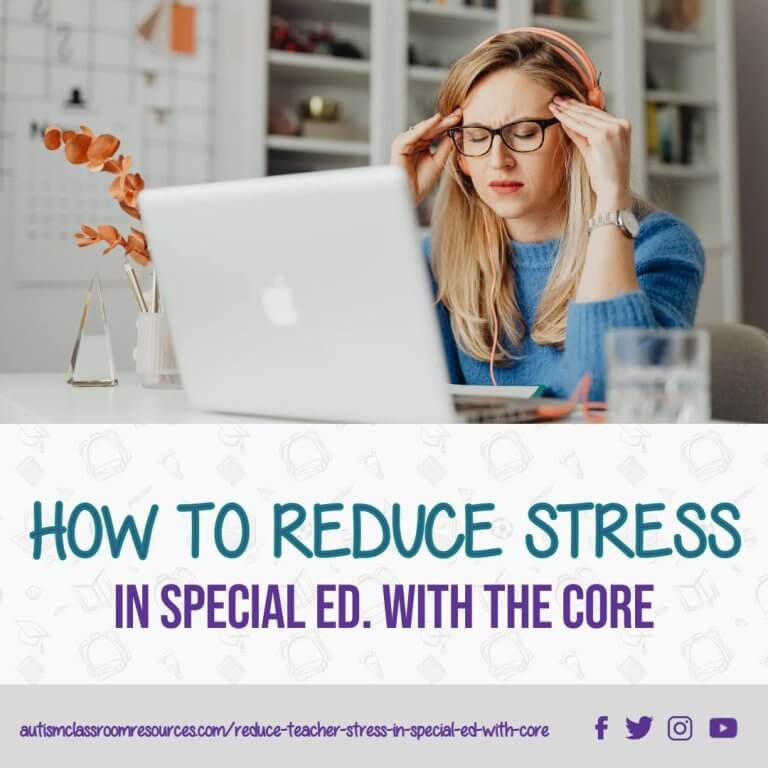Note from Chris: I have been very fortunate to have been nominated for the Liebster Award and I want to thank those who nominated me so you can check out their wonderful blogs. Preschool Wonders, Adventures of Room 83, and Mrs. P’s Specialties. Thank you so much for nominating me. I have a number of things I want to cover before people get back to school, so I really can’t participate in the questions and all, but wanted to thank you and make sure that I linked back to all your wonderful blogs!
And now, we continue with the 12 tools. To see the earlier posts of this series, click here.
So, we are now on #5…as you can guess from the pictures, it’s bins! Yep, Sterlite, Rubbermaid, laundry baskets, and Tupperware, all sorts of plastic bins and containers. This is the type of materials that principals often don’t understand. It is hard to understand why laundry baskets are a necessary tool for an academic class. However, for an autism classroom that is self-contained the use of containers is critical for structured work systems as well as for organizing the many manipulatives needed for instruction. Let’s look at some uses for the bins.
So, one is obviously for storage. However, with students moving through centers and the types of manipulatives, the bins are important for organizing by group, by task or by student.
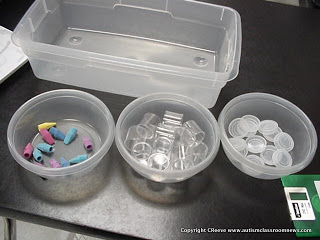 As part of the work system, baskets also store the tasks that go into the system. This is a shot of the work basket shelf. Of the two numbers on the basket, one would go on the schedule and one would stay on the basket to match the schedule. This allows the teacher to write the numbers of the tasks he or she wants the student to work on in her lesson plans and for anyone in the classroom to set up the system for each student. Or for students who are more independent, they can have a list of numbers and go to the shelf to get the work on their own. The tops of the bins allow for stacking too.
As part of the work system, baskets also store the tasks that go into the system. This is a shot of the work basket shelf. Of the two numbers on the basket, one would go on the schedule and one would stay on the basket to match the schedule. This allows the teacher to write the numbers of the tasks he or she wants the student to work on in her lesson plans and for anyone in the classroom to set up the system for each student. Or for students who are more independent, they can have a list of numbers and go to the shelf to get the work on their own. The tops of the bins allow for stacking too.
This picture is a great example of how we use bins and small containers to organize the tasks within the bins, so the smaller containers are important too. In this example, the student puts one eraser in the clear container and puts the top on before putting it in the larger bin when finished. This helps the student put them in order left to right to complete the task in an organized way. Some of the smaller bins can be replaced by margarine and deli containers you save.

Laundry baskets sometimes makes administrators wonder about the order, but they are important for finished baskets. I prefer the larger rectangular basket like the one on the left because the student can put multiple completed baskets in it without having them tip over or fall out.
So finally, when you start a classroom, it might look like the one to the right. This is a classroom that had nothing in it when we started. you can see the Dollar Store order on the table and the Walmart order is elsewhere in the room. IT’s made up of laundry baskets and bins, and this wasn’t even all of them. But as with everything in this series, having the right tools to the do job makes it possible to focus on the more important task of planning the educational programs for the students.
What other uses do you have for bins in your classroom?
 |
| For more ideas in setting up classrooms, check out our book. |

